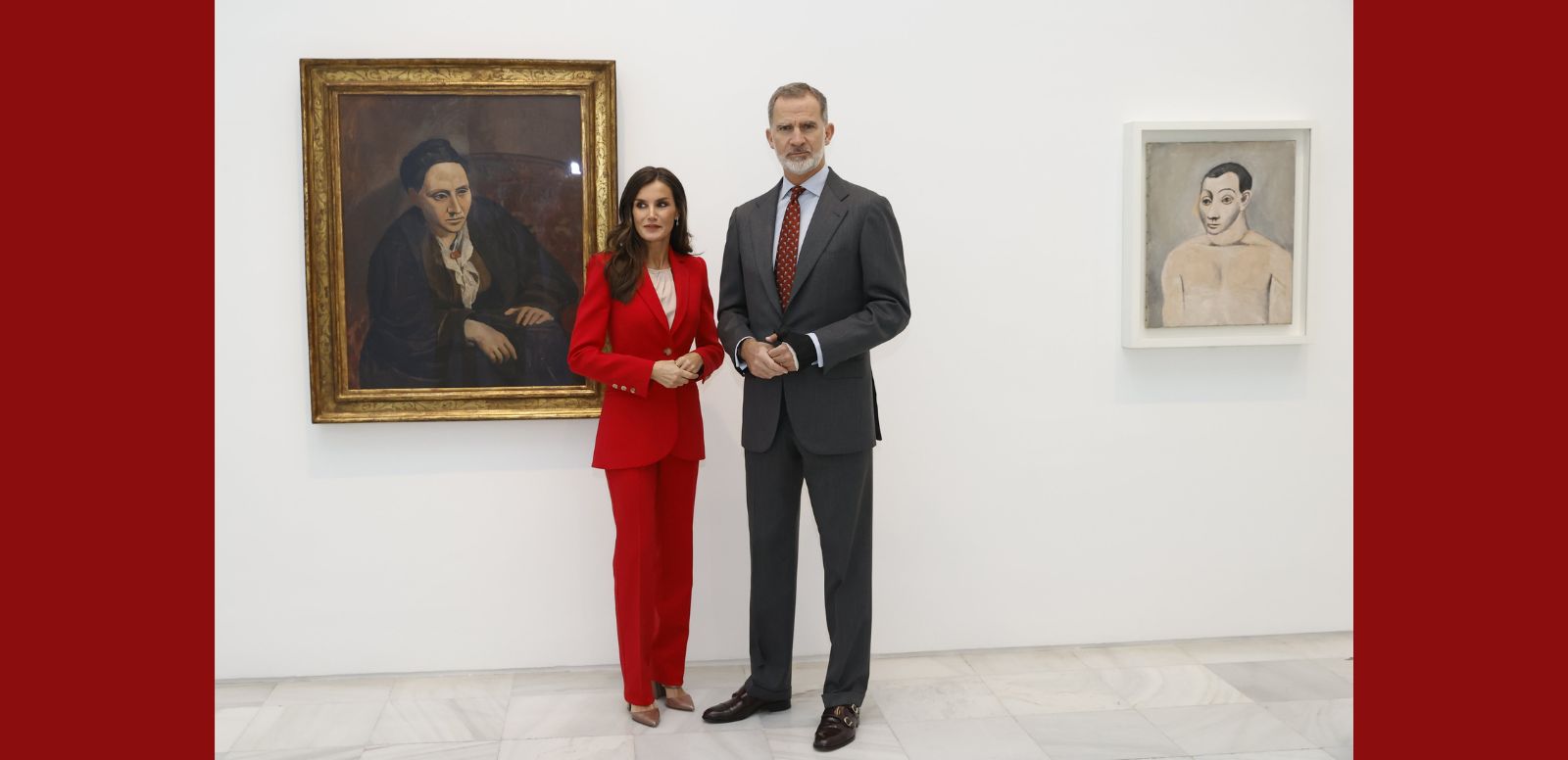
The Museo Nacional Centro de Arte Reina Sofía today inaugurated the exhibition Picasso 1906: The Great Transformation, following a ceremony led by Their Majesties King Felipe and Queen Letizia.
Their Majesties the King Felipe and Queen Letizia were accompanied by the National Commission for the Commemoration of the 50th anniversary of the death of Pablo Picasso, of which they are honorary presidents; and by the Ministers of Culture and Sport, Miquel Icete i Llorens; of Foreign Affairs, European Union and Cooperation, José Manuel Albares Bueno; and of the Presidency, Relations with the Courts and Democratic Memory, Félix Bolaños García.
Their Majesties the King and Queen, Iceta i Llorens, Albares Bueno and Bolaños García toured the eight sections of the exhibition that explore the different facets of the artist's work in 1906, guided by its curator, Eugenio Carmona, and also accompanied by the director and the president of the board of trustees of the Museo Nacional Reina Sofía, Manuel Segade and Ángeles González-Sinde.
The inauguration was also attended by the general secretary of the Presidency of the Government, Judit González Pedraz; the general technical secretary of the Ministry of Finance and Public Administration, Marta de Andrés Novo; the former first vice-president and former minister of Culture, Carmen Calvo Poyato; the Spanish and French commissioners of the Picasso Celebration 1973-2023, Carlos Alberdi Alonso and Cècile Debray, president of the Musée national Picasso Paris; Trinidad Jiménez, director of Global Strategy of Public Affairs at Telefónica, collaborating company of the Picasso Celebration 1973-2023 in Spain; Isabel Díaz Ayuso, president of the Community of Madrid; Jean-Michel Casa, ambassador of France in Spain and member of the Binational Commission; the general director of the Spanish Tourism Institute, Miguel Ángel Sanz Castedo; the general director of the Museo Nacional Thyssen Bornemisza; and Richard Widmaier-Picasso, grandson of Pablo Picasso.
The exhibition Picasso 1906: The Great Transformation sheds light on Picasso's initial contribution to the definition of "modern art". To date, 1906 has been regarded as an extension of the artist's pink period or as a prologue to his famous work Les Demoiselles d'Avignon (1907). However, it is now recognized that 1906 was a unique and significant artistic period in Picasso's creative evolution.
In that year the artist took a radical turn in his life and work, leaving behind bohemianism and pessimism, and sought to refound the artistic experience surrounded by friends, poets, art dealers and collectors with whom he shared his vision of change.
This exhibition culminates the Spanish program of the Picasso Celebration 1973-2023 , at its peak, with seven major projects currently open to the public: Picasso. Untitled at La Casa Encendida, in Madrid, until early January 2024; Picasso sculptor. Matter and Body at the Guggenheim Museum in Bilbao and Picasso. The Sacred and the Profane at the Museo Nacional Thyssen-Bornemisza, in Madrid, which will remain open until January 2024. Miró-Picasso, a joint action of the Museu Picasso Barcelona and the Fundació Joan Miró, open until February 2024, along with other exhibitions such as Picasso en la retina. Portraits of Catalan artists at the Fundació Palau, in Caldes d'Estrac, and Diego Velázquez invites Pablo Picasso...Carmen Calvo, at Casa de Velázquez, in Madrid. El eco de Picasso, organized by the Museo Picasso Málaga and Picasso 1906: the great transformation at the Museo Nacional Centro de Arte Reina Sofía, can be visited until March 2024.

